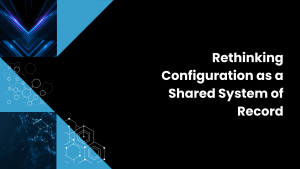We live in an era in which cloud IT infrastructure processes every interaction, transaction, and communication.
Cloud infrastructure has become the integration fabric for every type of application. For infrastructure managers, sifting through all of that application data can be a daunting challenge. They must monitor and correlate “wire data” at every level of the application stack, using it to manage service levels in real time. Just as important, they must leverage that data for anomaly detection, situation response, remote diagnostics, root cause analysis, capacity management, and myriad other applications.
How can IT infrastructure managers harness this wire data to extract the insights needed to do their jobs at every level of necessary detail? IT infrastructure management depends on processing a growing volume, velocity, and variety of data from disparate devices, servers, applications, and other sources. However, the sheer complexity of this data threatens to overwhelm the people who manage this infrastructure.
This is the phenomenon of “data friction,” as discussed by Matt Cauthorn of ExtraHop Networks, a provider of real-time IT infrastructure analytics. It refers to obstacles that prevent infrastructure managers from extracting the operational insights they need to do their jobs effectively. It stems from the complexities that administrators encounter in the processes of collecting, aggregating, analyzing, and otherwise using this data to monitor, maintain, and improve service levels.
Data friction may stem in part from underpowered analytics tools. With infrastructure wire data, the key insights may remain beyond infrastructure managers’ reach if they merely try to view them using simple queries, pre-existing reports and dashboards, and other standard analytic views. For deeper insights into more complex infrastructure issues, managers may need to call on more sophisticated real-time, historical, and predictive analytics.
Increasingly, Wikibon sees infrastructure managers applying the most sophisticated machine learning (ML), deep learning (DL), and artificial intelligence (AI) tools for operational decision support. These technologies can help to elucidate the most noteworthy correlations, anomalies, and other insights using statistics-based approaches such as artificial neural networks, support vector machines, and cluster analysis.
If you’re an infrastructure manager, you almost certainly have practical insights for addressing the data friction that keeps you from achieving your operational objectives. Please join ExtraHop Networks and Wikibon for the #DataFriction CrowdChat “Modern Infrastructure Managmement: Accelerating Productivity Through Machine Learning.” On Thursday, September 7, 2017 at 10-11am PDT/1-2pm EDT, you can contribute to the chat by clicking here, and logging in with your personal Twitter handle, and posting your thoughts in an interactive, moderated Q&A format.

In this Crowdchat, infrastructure management experts, practitioners, and other interested parties will discuss the factors that cause data friction as well as techniques—such as machine learning–for addressing it proactively. ExtraHop’s Cauthorn will be one of the featured experts. Here are the specific topics we’ll discuss in the CrowdChat:
- How rapidly is your enterprise infrastructure management data growing in volume?
- Is it getting harder or easier to extract value from your infrastructure data?
- Is your infrastructure data becoming more of a strategic asset or overhead burden?
- Is your IT organization a facilitator or obstacle to gaining value from your infrastructure data?
- How extensively does decision making, powered by insights from infrastructure data, permeate your organization?
- How easy is it for users to find the infrastructure data & associated analytics they need?
- How much confidence do users have in the veracity of the infrastructure data?
- Has machine learning made it easier to unlock insights from your infrastructure data?
I’ll also be sharing my thoughts in the CrowdChat. Can we count on your participation?


